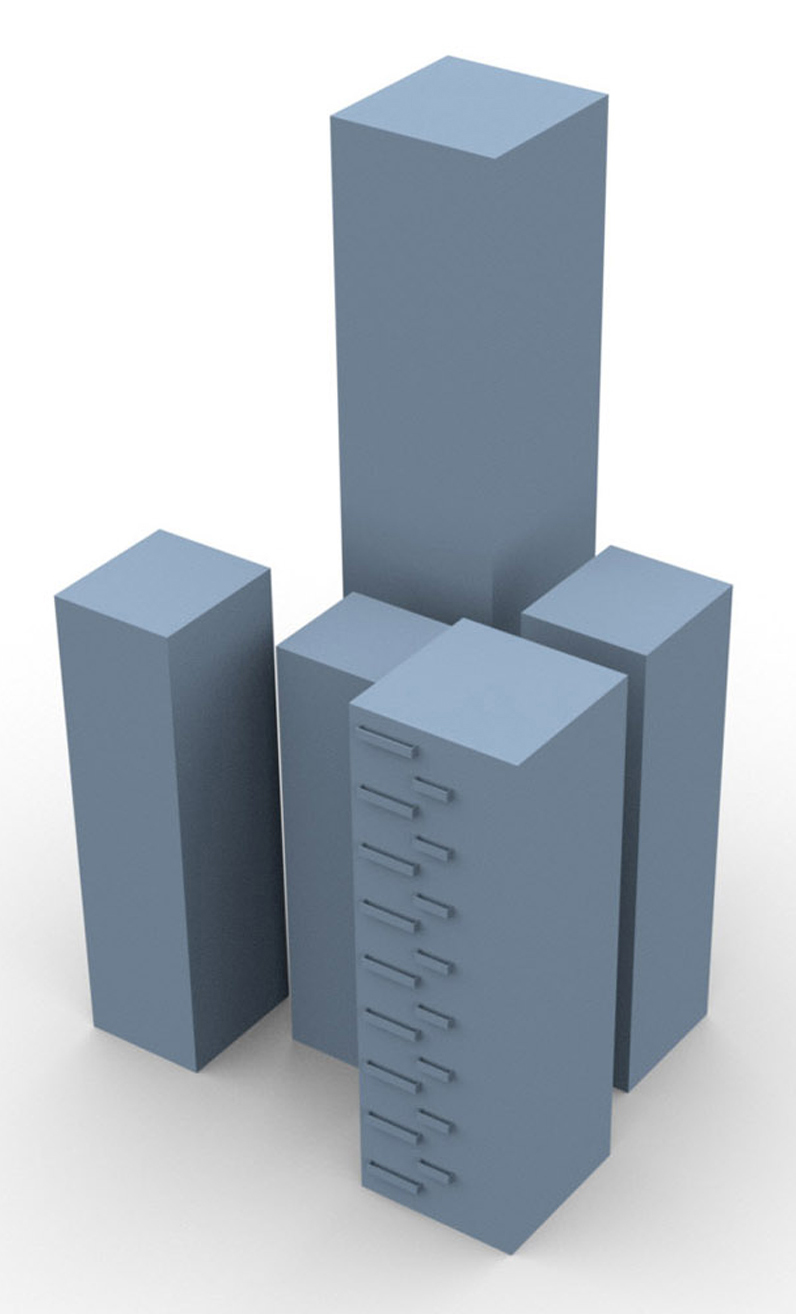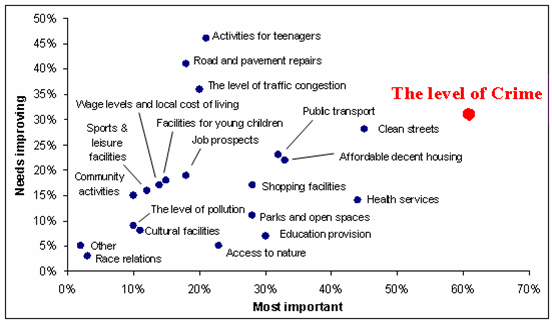Difference between revisions of "Residential"
| Line 2: | Line 2: | ||
={{PAGENAME}}= |
={{PAGENAME}}= |
||
| − | [[File:RESIDENTIAL.jpg|right|200x200px|link=]]A |
+ | [[File:RESIDENTIAL.jpg|right|200x200px|link=]]A "residential [[urban object]]" is a unit which is generally zoned/designated for dwelling purposes and designed to accommodate housing facilities in which people can live. |
Revision as of 10:25, 15 January 2013
Contents
Residential

A "residential urban object" is a unit which is generally zoned/designated for dwelling purposes and designed to accommodate housing facilities in which people can live.
Description
Residential areas, which are normally zoned as such by the relevant (city authority or municipality) development plan, are typically classified by providing varying amounts of living accommodation for people, with the amount of units and consequently the number of people living within them depending upon the prescribed density. The amount of land zoned for residential development should be in keeping with the projected population growth figures, as set out in regional strategic development documents (such as Regional Planning Guidelines).
Residential areas will generally consist of accommodation units of a number of different types: apartment schemes (medium to high density), detached or semi detached houses (low to medium density), or terraced housing (medium to high density). The character of a residential area can be heavily influenced by the mixture of tenures (owner occupier, private rental, social housing) which are available within them. All of these factors will have an influence on the security of a residential area.
Residential building types
Residential development can encompass a wide variety of structures. For the use of this page, we divided this broad spectrum into three archetypes:
| Residence type | Description | Icon |
|---|---|---|
| Housing estates | Housing estates consist of detached, semi-detached and/or terraced housing, typically with some level of private open space associated with each unit. |  |
| Housing blocks | A housing block is made up of a rectangular layout consisting of connected residential units, often with a private open square contained within it. |  |
| High rise housing | High rise housing consists of apartment schemes usually in excess of 6 storey's in height, although apartment schemes of lower height are common. |
These archetypes will never completely fit any specific situation, but are used to present the typical issues associated with these archetypical situations, to enable the reader to decide to what degree it applies to his or hers specific situation.
In the text below, any of these three icons will be used whenever a observation is specific to one or more of the above mentioned archetypes.
Functions
Social
From the security and resilience point of view, the prior **social** importance of residential areas is to provide a trusted environment for citizens.
Residential land use is hugely important to a citizen's qualiy of life, and the standard of housing experienced by citizens will have a significant impact on overall health. Housing provides shelter, a basic human need, and privacy. The quality of housing is influenced by its size, amenities, habitability and general livability. The attractiveness of residential areas and the wider urban environment influences the quality of life of citizens. Those aspects are important from the societal [security] point ov view since they have an impact on individual and social [resilience].
There is a couple of relations between the built environment of a residential area and security threats and vulnerability.
As an example, the importance of housing is recognised in the United Nations Covenant on Economic, Social and Cultural Rights, which includes 'the right of everyone to an adequate standard of living for himself and his family, including adequate ... housing'.[1] Residential areas should provide some aspect with which a citizen may identify (be it employment or a recreational facility, etc), and offer the services/facilities that s/he seeks. Some people who rent property within areas may feel less of a sense of ownership or permanency/commitment for that area[2].
The level of safety and security is a very important value in the perceived attractiveness of a residential area (see illustration), as residential areas provide the home base for people and their families. In addition, inadequate housing increases the risk of severe ill health and disability; it can also lead to poor mental health, lower educational attainment, unemployment and poverty.
Another example is that poor residential development (bad housing) can impact on children's future chances. The Shelter housing agency report 'Chance of a Lifetime' documents the powerful influence of poor housing on children's lives and shows how its destabilising impact is felt long into adulthood.[3] On every aspect of life - mental, physical, emotional, social and economic - living in bad housing can hand children a devastating legacy. Studies show that poor housing can lead to a 25% higher risk of experiencing severe ill-health and disability before they reach middle age. It can have a devastating impact on emotional wellbeing. Research shows that homeless children are three to four times more likely to have mental health problems than other children.
Quality of residency also has criminological impact:
One aspect relates to the creation of hazard. Evidence suggests that nearly half of young offenders have experienced homelessness as a child, and the roots of offending behaviour may well be traceable to problems that emerge when children grow up in such conditions:[4]
Another aspect relates to cimmunity resilience and citizens' active ownership of societal security: Communities with high levels of ‘collective efficacy’ – or high levels of cohesion and mutual trust – will be willing to intervene to challenge behaviour in a given setting and stop it from escalating. Communities with low levels of ‘collective efficacy’ (for example areas with a high proportion of young offenders as a result of a churning migrant population with shifting moral values, high levels of poverty and low levels of community cohesion) – will be less willing or able to intervene.[5]
How does bad housing affect children’s chances to make a positive contribution in life?
|
Economic
Residential areas accommodate the people who operate in and utilise the economic systems of the urban area. Additionally, residential areas both enhance a communities’ ability to attract new business, and in the same time provide citizens with one of its most basic needs (housing). As a whole, residential land use is the most valuable urban spatial structure due to its great aggregate value and economic impact for the local economy[7]. Moreover, residential areas foster critical mass which contributes to economic, social and transport (infrastructure) activities. These economic impacts can be estimated with the help of economic tools/techniques.
The most common types of residential security threats (in terms of human intent) are crime related (e.g., domestic burglary, robbery, graffiti, assault, etc.). Crime generates costs in anticipation of crime (e.g. locks, surveillance, etc.), as a consequence of crime (loss of property) and in response to crime (police investigation, legal system, etc.). Indirectly, crime has (amongst others) an impact on, for example, the local real estate value[8].
Security devices such as locks, closed circuit television, surveillance or improved street lightning have an economic impact (in terms of costs and benefits) which can be considerable. Another way to enhance security is by design, e.g. the designing out approach, or as an aspect of sustainable design, which seeks a balanced consideration of social, economic, cultural and environmental aspects in urban design[9]. In general, these measures demand larger investments than traditional security measures, but at the same time they are able to avoid future costs due to the long-term prevention of crime.
Mobility
The presence of large numbers of people living within one part of an urban area brings with it a requirement for mobility, in allowing them to move throughout the urban area to take advantage of the various functions on offer within its different parts.
The transportation demand in a network depends on the functions of the different zones in a network. With demand estimation models, the demand can be estimated as the expected number of trips in a certain time period for a certain modality (e.g. car, public transport) between each combination of origin zone and destination zone, depending on the function of the zones. This is also called a trip market. For a residential zone, in the morning there will be many trips going out (e.g. towards work, school), while in the afternoon there will be large demands going into the zone. This should be taken into account for operating traffic management measures or for predicting future/expected traffic flows.
- residential areas can benefit from a design that minimises transit through the area, as crime is positively related to the amount of traffic through an area and residential areas only need good entry and exit points and can function perfectly well as cul-de-sacs.
Safety
Safety in all its forms, is an important function for the perceived quality of these environments. However well as these environments are designed to provide safety, the safety function can be deteriorated by crime. Examples of crime deteriorating safety are:
- Vandalism: destruction of safety features (such as traffic signs, fencing around dangerous areas or child-safe playgrounds) can lead to dangerous situations and safety hazards.
- Burglary often leads to substantial damages due to the forced entry. Broken windows and doors no longer provide shelter for the cold, wind, rain, which can lead to subsequent safety hazards, such as with electricity and wet surfaces.
- Antisocial behaviour can for instance endanger people by generating street litter, such as broken bottles or reckless driving
- Drug offences can also lead to dangerous litter in the streets, such as used needles.
Security Issues
Crimes most relevant to residential areas, are:
Of these crimes, burglary is in general regarded as the most relevant to residential areas. Burglary is a security issue that is amongst others affected by the population density. Though generally high population density is associated with high rates of assault and burglary, when corrected for the presence of poverty and lack of vegetation, rates of assaults and burglaries are higher in more sparsely populated neighbourhoods. This means that especially high-density neighbourhoods with little vegetation are prone to these issues[10]. Many traditional designed high-rise residential environments ![]() were designed with these qualities, leading to relatively high levels of crime and a tendency for early deterioration.
were designed with these qualities, leading to relatively high levels of crime and a tendency for early deterioration.
Measures
- Directing traffic flows can be effective both in preventing criminals to become aware of opportunities and reducing the opportunities for approach of a target. Especially housing blocks
 and housing estates
and housing estates can benefit from a careful design of traffic flows, effectively reducing the 'visibility' of an area to criminals. For high-rise housing
can benefit from a careful design of traffic flows, effectively reducing the 'visibility' of an area to criminals. For high-rise housing  this is less effective due the high visibility of the structure.
this is less effective due the high visibility of the structure. - Target hardening can greatly increase the effort needed for criminals to enter the object and thereby reduce the attractiveness of a n object
- Surveillance can be effective against mentioned security issues, but can incur high costs if implemented as dedicated observers, either on location or remote. A more natural form of surveillance is surveillance by the inhabitants (also known as 'natural surveillance'). This can be very effective if the right conditions are met, such as adequate surveillability of the environment (from the own home), social cohesion and a sense of ownership. These factors can all be influenced by the structure of the built environment, but have proven to be most challenging to achieve in high-rise housing
 .
. - Reaction force is needed to make detection measures, such as alarms or surveillance effective
- Target removal such as the removal of coin operated gas and electricity meters in houses or coin operated parking meters
- Facilitating compliance can prevent littering by providing ample waste bins, it can prevent unwanted traffic flows by careful design of the mobility in an area
- Ownership is an important aspect in the prevention of unauthorized entry by creating a clear distinction between public and private space
- Maintenance and designing for easy maintenance can be used as the removal of a crime motivator, as deterioration can be an incentive to crime
- Removal of crime motivators ensures the separation of perpetrators , their incentives and opportunities, Such as the prevention of blank, reachable and highly visible walls to prevent graffiti.
A combination of these measures is used in the practical approach 'secured by design'.
Footnotes and references
- ↑ http://www.equalityhumanrights.com/human-rights/human-rights-practical-guidance/guidance-from-the-commission/human-rights-at-home/
- ↑ http://www.npr.org/2012/06/07/154504195/generation-rent-slamming-door-of-homeownership
- ↑ Harker, Lisa (2006) Home Truths: http://www.guardian.co.uk/society/2006/sep/13/comment.guardiansocietysupplement
- ↑ Harker, Lisa (2006) Chance of a lifetime: The impact of bad housing on children’s lives. Available from: http://england.shelter.org.uk/__data/assets/pdf_file/0016/39202/Chance_of_a_Lifetime.pdf
- ↑ Carrabine E., Cox P., Lee M., Plummer, K. and South, N. (2008) 'Criminology A Sociological Introduction, 2nd Edition', Chapter 8: Crime, Place and Space. UK: Routledge
- ↑ http://england.shelter.org.uk/__data/assets/pdf_file/0007/66364/Lifechancereport.pdf
- ↑ For example: Residential development creates direct construction activity (primary economic impact), including planning professionals, attorneys, designers, marketing, landscaping, etc.). Indirectly, residential areas create local jobs, income and taxes due to the consumption generated by residential inhabitants.
- ↑ This regards not only violent crimes or domestic burglary, but also petty crimes such as graffiti and vandalism.
- ↑ Including fundamental issues such as how affordability can be reconciled with a secure/safe place to live, and how an imbalance between affluence and deprivation can be prevented.
- ↑ Mary K. Wolfe, Jeremy Mennis;Does vegetation encourage or suppress urban crime? Evidence from Philadelphia, PA; in: Landscape and Urban Planning 108 (2012), pp 112– 122
MAP
<websiteFrame> website=http://securipedia.eu/cool/index.php?concept=Residential width=100% border=0 scroll=auto align=middle </websiteFrame> <headertabs/>

